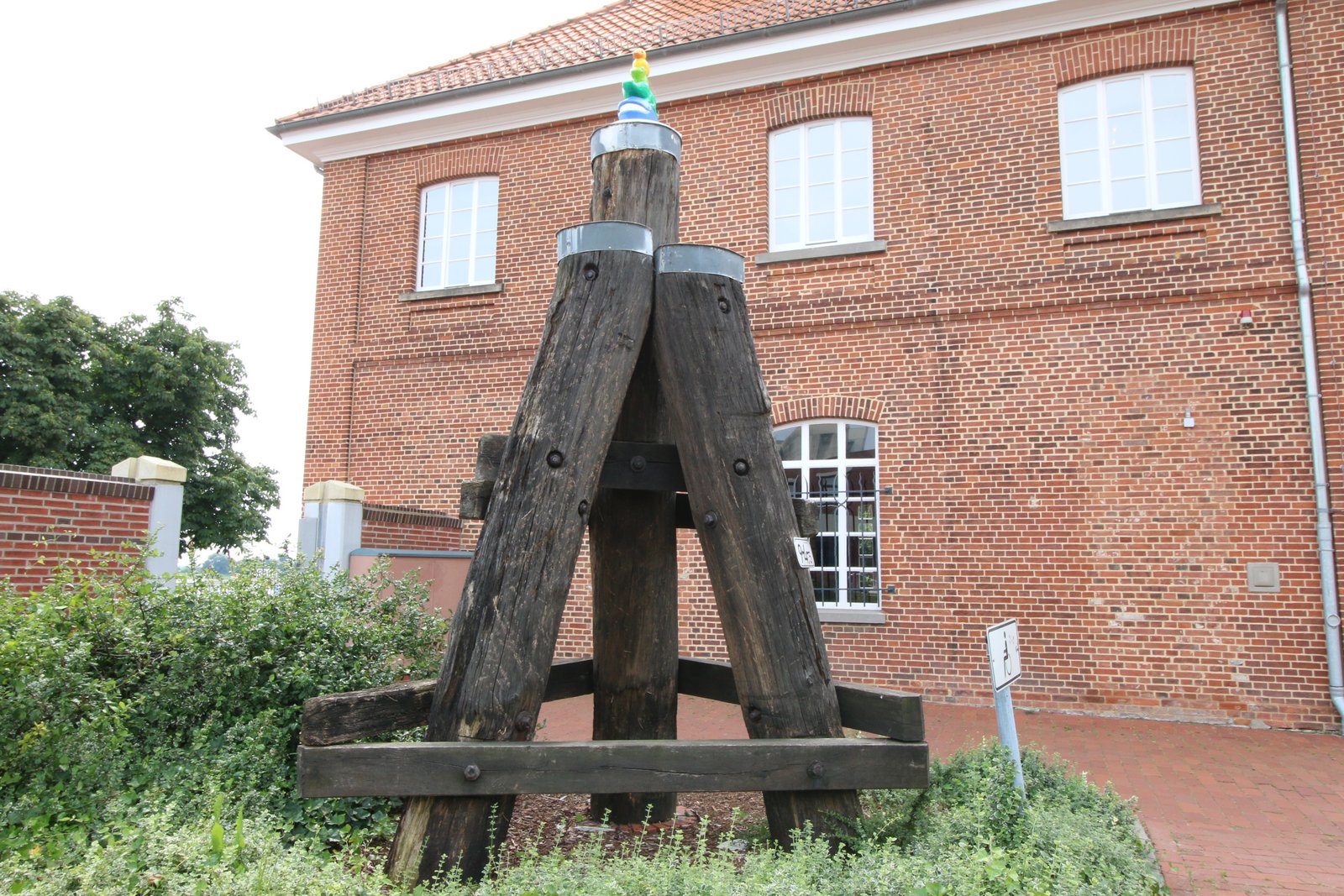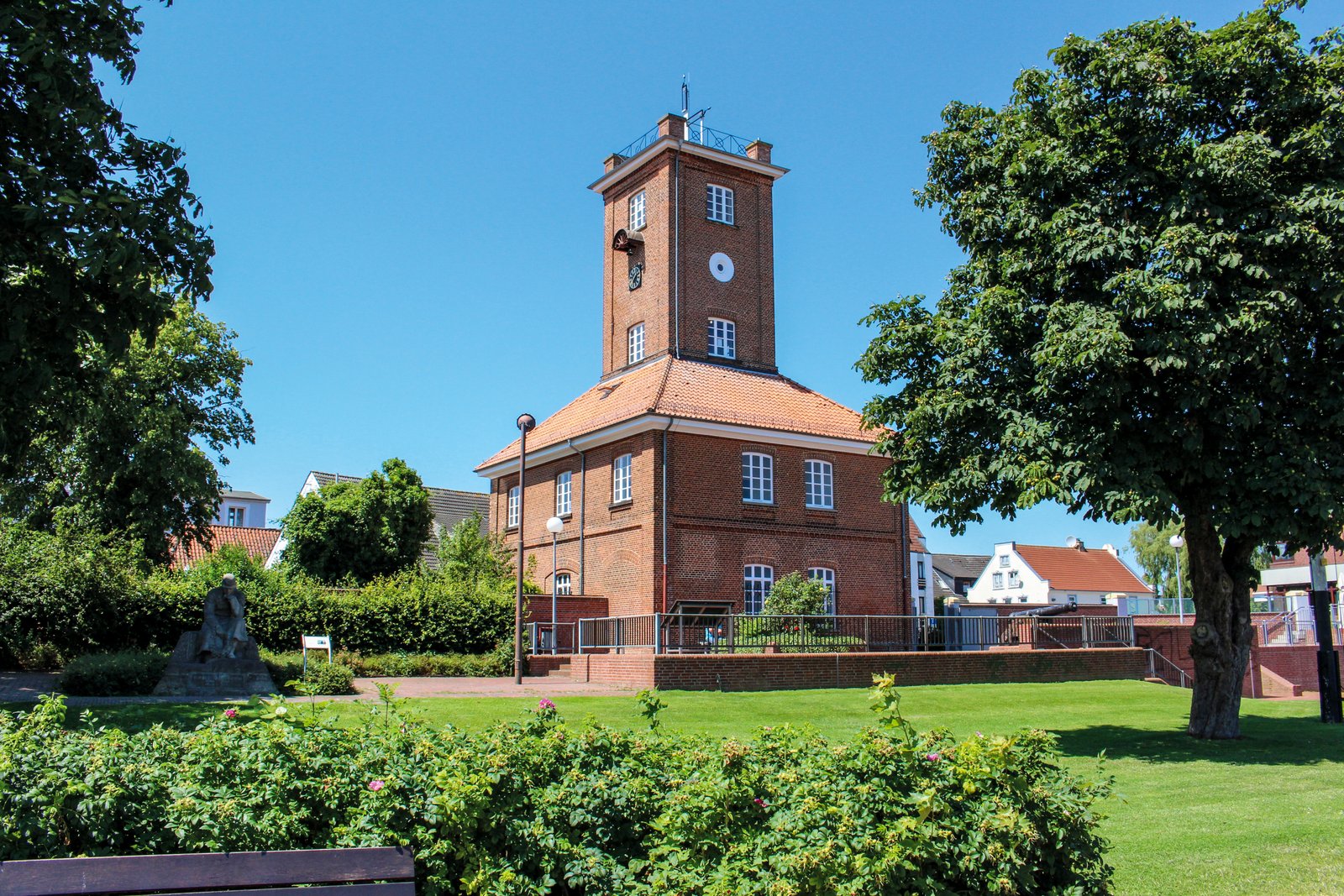
Bewerten
722646fc-7ce8-4016-8f49-33a53714a2c5|0|.0|96d5b379-7e1d-4dac-a6ba-1e50db561b04
The term „Duckdalben“ refers to mooring dolphins for ships in harbors, and these non-swimming dolphins are rammed into the ground and arranged in groups of three. Duke Peter Friedrich Ludwig von Oldenburg (1755-1829) commissioned the first „Duckdalben“ along the Weser waterway parallel to Brake, offering the numerous ships a chance to tie up along the pier. In 1790, as many as 138 vessels made use of the dolphins. Indeed, these dolphins served as the basis for the subsequent upturn in maritime traffic and cargo handling in Brake, with the expansion of the harbor amd the Stromkaje following in the wake of these developments. This museum exhibit showing significant traces of usage is an example of such a dolphin, and it is often an object in artistic presentations.
Stakes in the Water
 Duke Peter F. L. of Oldenburg
Duke Peter F. L. of Oldenburg
(1755-1829)
As of 1787, the first mooring dolphins were placed in long rows along the Weser channel in front of Brake, pursuant to a decree issued by Peter Friedrich Ludwig von Oldenburg (1755-1829). Large ships which could not reach the Braker Siel, the subsequent inland harbor, now had the chance to tie up along the stakes and reload their cargoes in barges. Today, it is nearly impossible to unearth the true original meaning of the term “Duckdalben”. Nevertheless, it is assumed that the word initially came from the Netherlands. Indeed, in Holland, the term “Dukdalf” is a combination of “Dallen” (stakes) and “ducken” (literally to duck). At any rate, “leaning” or “immersed” stakes can be seen as a good description of these piled dolphins used for the mooring of ships and conjuring up images of the sea mammals after which they are named in the English language.
The Duke of Alba
Fernando Álvarez de Toledo (1507-1582), the Duke of Alba, is often mentioned as the originator of the name. This, however, is probably just nothing more than a nice myth. Ess, interestingly enough, the term “Duke of Alba”, when translated into Spanish, French and Italian, is written as “Duque de Alba“, “(Le) Duc d’Albe“ and “(Il) Duca d’Alba“.
 Duke of Alba
Duke of Alba
Painting by Tizian
Indeed, the similarity to “Duckdalben” is obvious. Moreover, Fernando Álvarez de Toledo ordered the installation of such mooring dolphins for the purpose of increasing the berthing capacities in the harbors of the Netherlands – and the Netherlands were part of territories possessed by the Spanish crown at the time.
Another Form, a similar Principle
Duckdalben are used even today as mooring dolphins in maritime transportation along rivers, on the shores of lakes and other large bodies of water. Thereby, distinctions are made between the elastic types, used for landing, guiding or repelling, and the rigid types, used for the mooring and warping of ships and boats. In the meantime, steel has replaced wood as the material used for these dolphins.
Experiences in the museum
You can discover more about the development of Brake as a harbor in the telegraph. Especially the ground and fifth floors hold information on the past and present importance of the harbor location on the Lower Weser. Learn how the competition between the Grand Duchy of Oldenburg and the Hanseatic City of Bremen influenced the region.
Maritime Museum - Telegraph, Kaje 8, 26919 Brake - Ground floor & 5th floor
